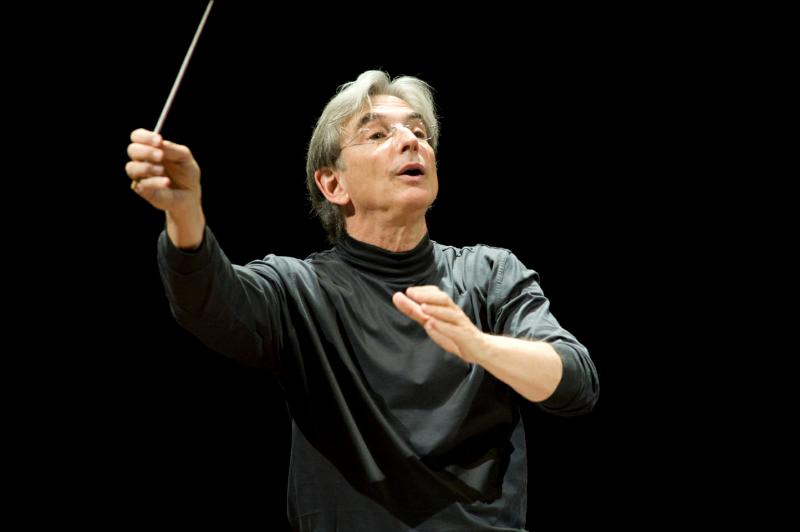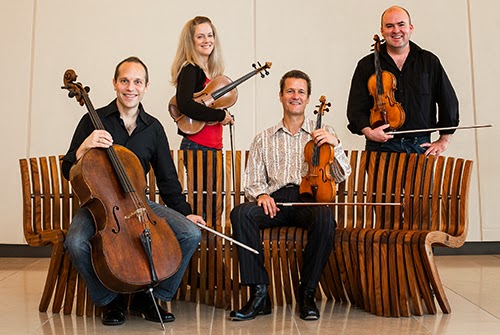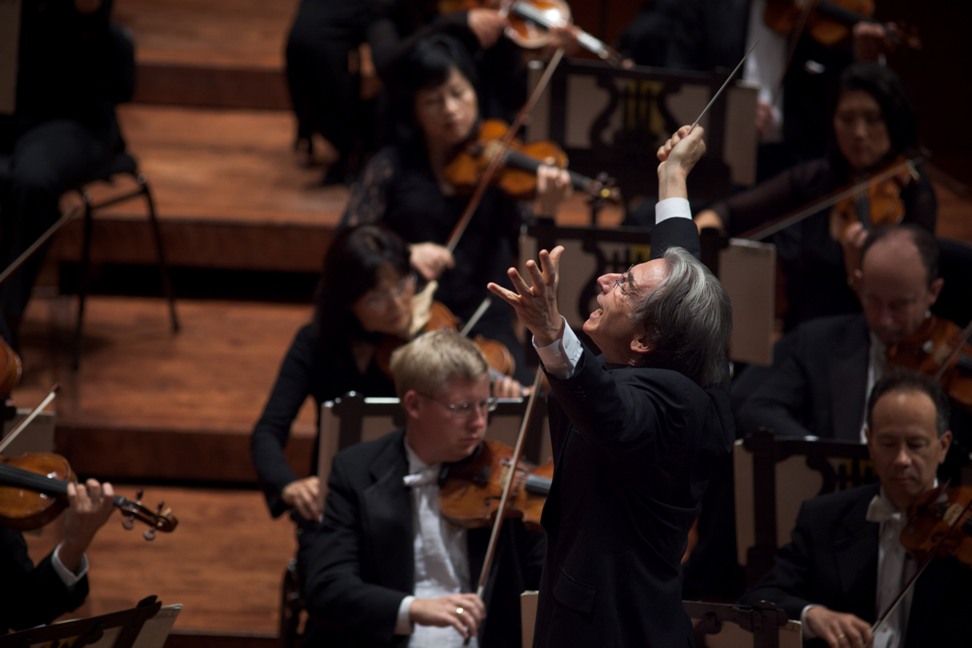St Lawrence String Quartet, San Francisco Symphony, Tilson Thomas, RFH | reviews, news & interviews
St Lawrence String Quartet, San Francisco Symphony, Tilson Thomas, RFH
St Lawrence String Quartet, San Francisco Symphony, Tilson Thomas, RFH
Top west coast orchestra is sleek but never truly fantastical in an admirable programme

A voyage around Beethoven by Ives and John Adams, and then beyond him by Berlioz, added up to a vintage San Francisco Symphony programme from its music director Michael Tilson Thomas. Forty years on from his first concert with SFS, he’s still youthful in demeanour, still flapping with seagull (or albatross) like flamboyancy. But is there a chill behind the showmanship?
The sound of the orchestra is still sleek and bright. That paid dividends in a Bruckner concert I heard from them under the no-nonsense Edo de Waart on home territory back in the 1990s, not always last night. The signing-in was impressive, with woodwind winsome in Henry Brant’s rather lovely arrangement of the “Alcotts” slow movement of Ives’s fiendish – though not – Concord Piano Sonata (who was Brant and why did it take him 40 years to complete the orchestration? As usual the Southbank programme notes – Adams’ own from San Francisco honourably excepted - leave us wanting to know more). The famous Beethoven Fifth pattern, rather straightened out by Ives, is less obvious at first than it sounds on piano, though we’re left in no doubt once the strings join in. Then Ives glides away from it into what sounded in the arrangement like Hollywood film music of the highest order.
 Was it deliberate, too, that the Ninth Symphony scherzo rhythm in Adams’ giddying Beethoven tribute Absolute Jest sounded so unclear from the timps at the start – atmosphere, mood-music and subtlety or just reticence? Anyway, there was nothing reticent, as ever, about the (literally) edge-of-seat playing of Adams’ dream team, the St Lawrence String Quartet (pictured above), for whom he's also composed one of the best quartets in the contemporary repertoire: what a delight to watch first violinist Geoff Nuttall shaking and sharing with the orchestral players. The experience was quite a different one from the UK premiere in which a slightly quartet different team played last year, under Adams’ springy baton with the London Symphony Orchestra. That felt much more like pure jeu d’esprit with a few thoughtful sidelines; the somewhat reserved spirit of the SFS made for more introspection, more sadness in some of the morphs.
Was it deliberate, too, that the Ninth Symphony scherzo rhythm in Adams’ giddying Beethoven tribute Absolute Jest sounded so unclear from the timps at the start – atmosphere, mood-music and subtlety or just reticence? Anyway, there was nothing reticent, as ever, about the (literally) edge-of-seat playing of Adams’ dream team, the St Lawrence String Quartet (pictured above), for whom he's also composed one of the best quartets in the contemporary repertoire: what a delight to watch first violinist Geoff Nuttall shaking and sharing with the orchestral players. The experience was quite a different one from the UK premiere in which a slightly quartet different team played last year, under Adams’ springy baton with the London Symphony Orchestra. That felt much more like pure jeu d’esprit with a few thoughtful sidelines; the somewhat reserved spirit of the SFS made for more introspection, more sadness in some of the morphs.
Still, it’s a brilliant piece of through-composed symphonic writing, Adams’ absorption of Beethoven’s quartet and symphonic scherzo themes always stamped with his own identity: no more pastiche than Stravinsky’s misleadingly-named “neoclassical” scores. “Composers are drawn to another’s music to the point where they want to live in it,” Adams writes, and live in Beethoven he certainly does.
In a passage spotlighting low horns and trombones, Adams comes close to pulsing Berlioz, and that composer remains fresh and modern even in as familiar a work as his turning-point Symphonie fantastique of 1830. It’s still hard to believe that its premiere came only six years after that of Beethoven’s Ninth, pioneering as the "Choral" Symphony undoubtedly is. Tilson Thomas played up the instability with sometimes over-masterly tempo fluctuations in the opening "Reveries – Passions" movement, only letting rip in the last climactic, bacchanal treatment of the idée fixe representing his then-unattainable beloved, the Shakespearean actress Harriet Smithson.
 The ballroom dream sequence lilted and floated without ever quite tipping over into mania, and there was too little atmosphere about the country scene at the centre of the symphony; memories, reveries, still too strong of Yannick Nézet-Séguin’s fluorescent LPO performance with its oboe not backstage as on this occasion but placed high in a box to answer the onstage cor anglais, like one shepherd answering another further up the mountain. No such magic here, and the invention dragged without special intensity.
The ballroom dream sequence lilted and floated without ever quite tipping over into mania, and there was too little atmosphere about the country scene at the centre of the symphony; memories, reveries, still too strong of Yannick Nézet-Séguin’s fluorescent LPO performance with its oboe not backstage as on this occasion but placed high in a box to answer the onstage cor anglais, like one shepherd answering another further up the mountain. No such magic here, and the invention dragged without special intensity.
Tilson Thomas gave us the repeat in the "March to the Scaffold", along with the one in the first movement: welcome, but the brass so long withheld in Berlioz’s selective instrumentation stayed suave rather than wild and the head-in-basket moment passed without spotlight. A handsome midnight bell, focused strings and consummate clarinets (shrill E flat and ordinary) made one admire the outlandishness of the final Witches’ Sabbath - and I've never heard the creepy glissando on muted horn as well as woodwind in Berlioz's graveyard settng - but it still wasn’t extreme enough. Tilson Thomas lets us see too much the mechanics behind his superb control when we should be too swept up to notice. It was an impressive enough performance to drive many in the audience to fever pitch, which was then gently lowered in the encore, the "Saturday Night Waltz" from Copland’s Rodeo – lovely if you buy into the American innocence, and I don’t, my loss.
rating
Share this article
The future of Arts Journalism
You can stop theartsdesk.com closing!
We urgently need financing to survive. Our fundraising drive has thus far raised £49,000 but we need to reach £100,000 or we will be forced to close. Please contribute here: https://gofund.me/c3f6033d
And if you can forward this information to anyone who might assist, we’d be grateful.

Subscribe to theartsdesk.com
Thank you for continuing to read our work on theartsdesk.com. For unlimited access to every article in its entirety, including our archive of more than 15,000 pieces, we're asking for £5 per month or £40 per year. We feel it's a very good deal, and hope you do too.
To take a subscription now simply click here.
And if you're looking for that extra gift for a friend or family member, why not treat them to a theartsdesk.com gift subscription?
more Classical music
 First Person: clarinettist Oliver Pashley on the new horizons of The Hermes Experiment's latest album
Compositions by members of this unusual quartet feature for the first time
First Person: clarinettist Oliver Pashley on the new horizons of The Hermes Experiment's latest album
Compositions by members of this unusual quartet feature for the first time
 Gesualdo Passione, Les Arts Florissants, Amala Dior Company, Barbican review - inspired collaboration excavates the music's humanity
At times it was like watching an anarchic religious procession
Gesualdo Passione, Les Arts Florissants, Amala Dior Company, Barbican review - inspired collaboration excavates the music's humanity
At times it was like watching an anarchic religious procession
 Classical CDs: Camels, concrete and cabaret
An influential American composer's 90th birthday box, plus British piano concertos and a father-and-son duo
Classical CDs: Camels, concrete and cabaret
An influential American composer's 90th birthday box, plus British piano concertos and a father-and-son duo
 Cockerham, Manchester Camerata, Sheen, Martin Harris Centre, Manchester review - re-enacting the dawn of modernism
Two UK premieres added to three miniatures from a seminal event of January 1914
Cockerham, Manchester Camerata, Sheen, Martin Harris Centre, Manchester review - re-enacting the dawn of modernism
Two UK premieres added to three miniatures from a seminal event of January 1914
 Kempf, Brno Philharmonic, Davies, Bridgewater Hall, Manchester review - European tradition meets American jazz
Bouncing Czechs enjoy their Gershwin and Brubeck alongside Janáček and Dvořák
Kempf, Brno Philharmonic, Davies, Bridgewater Hall, Manchester review - European tradition meets American jazz
Bouncing Czechs enjoy their Gershwin and Brubeck alongside Janáček and Dvořák
 Solomon, OAE, Butt, QEH review - daft Biblical whitewashing with great choruses
Even a top soprano and mezzo can’t make this Handel paean wholly convincing
Solomon, OAE, Butt, QEH review - daft Biblical whitewashing with great choruses
Even a top soprano and mezzo can’t make this Handel paean wholly convincing
 Two-Piano Gala, Kings Place review - shining constellations
London Piano Festival curators and illustrious friends entertain and enlighten
Two-Piano Gala, Kings Place review - shining constellations
London Piano Festival curators and illustrious friends entertain and enlighten
 Echo Vocal Ensemble, Latto, Union Chapel review - eclectic choral programme garlanded with dance
Beautiful singing at the heart of an imaginative and stylistically varied concert
Echo Vocal Ensemble, Latto, Union Chapel review - eclectic choral programme garlanded with dance
Beautiful singing at the heart of an imaginative and stylistically varied concert
 Scott, Irish Baroque Orchestra, Whelan, RIAM, Dublin review - towards a Mozart masterpiece
Characteristic joy and enlightenment from this team, but a valveless horn brings problems
Scott, Irish Baroque Orchestra, Whelan, RIAM, Dublin review - towards a Mozart masterpiece
Characteristic joy and enlightenment from this team, but a valveless horn brings problems
 Classical CDs: Voice flutes, flugelhorns and froth
Baroque sonatas, English orchestral music and an emotionally-charged vocal recital
Classical CDs: Voice flutes, flugelhorns and froth
Baroque sonatas, English orchestral music and an emotionally-charged vocal recital
 Kanneh-Mason, Britten Sinfonia, Shave, Milton Court - a grin and a big beaming smile
A pair of striking contemporary pieces alongside two old favourites
Kanneh-Mason, Britten Sinfonia, Shave, Milton Court - a grin and a big beaming smile
A pair of striking contemporary pieces alongside two old favourites

Add comment